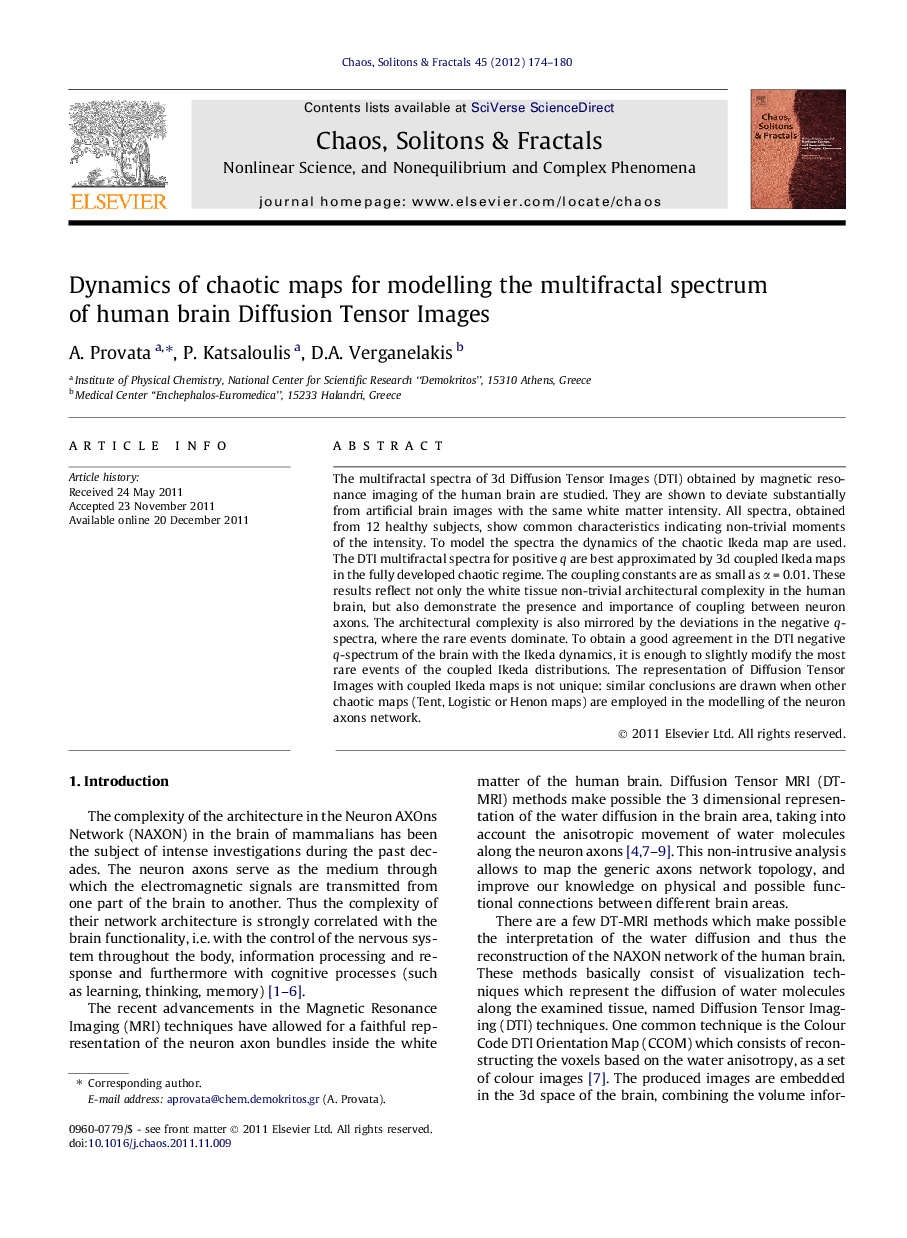| Article ID | Journal | Published Year | Pages | File Type |
|---|---|---|---|---|
| 1889653 | Chaos, Solitons & Fractals | 2012 | 7 Pages |
The multifractal spectra of 3d Diffusion Tensor Images (DTI) obtained by magnetic resonance imaging of the human brain are studied. They are shown to deviate substantially from artificial brain images with the same white matter intensity. All spectra, obtained from 12 healthy subjects, show common characteristics indicating non-trivial moments of the intensity. To model the spectra the dynamics of the chaotic Ikeda map are used. The DTI multifractal spectra for positive q are best approximated by 3d coupled Ikeda maps in the fully developed chaotic regime. The coupling constants are as small as α = 0.01. These results reflect not only the white tissue non-trivial architectural complexity in the human brain, but also demonstrate the presence and importance of coupling between neuron axons. The architectural complexity is also mirrored by the deviations in the negative q-spectra, where the rare events dominate. To obtain a good agreement in the DTI negative q-spectrum of the brain with the Ikeda dynamics, it is enough to slightly modify the most rare events of the coupled Ikeda distributions. The representation of Diffusion Tensor Images with coupled Ikeda maps is not unique: similar conclusions are drawn when other chaotic maps (Tent, Logistic or Henon maps) are employed in the modelling of the neuron axons network.
► Calculation of human brain multifractal spectra. ► Calculations are based on Diffusion Tensor MRI Images. ► Spectra are modelled by coupled Ikeda map dynamics. ► Coupled lattice Ikeda maps model well only positive multifractal spectra. ► Appropriately modified coupled lattice Ikeda maps give correct spectra.
